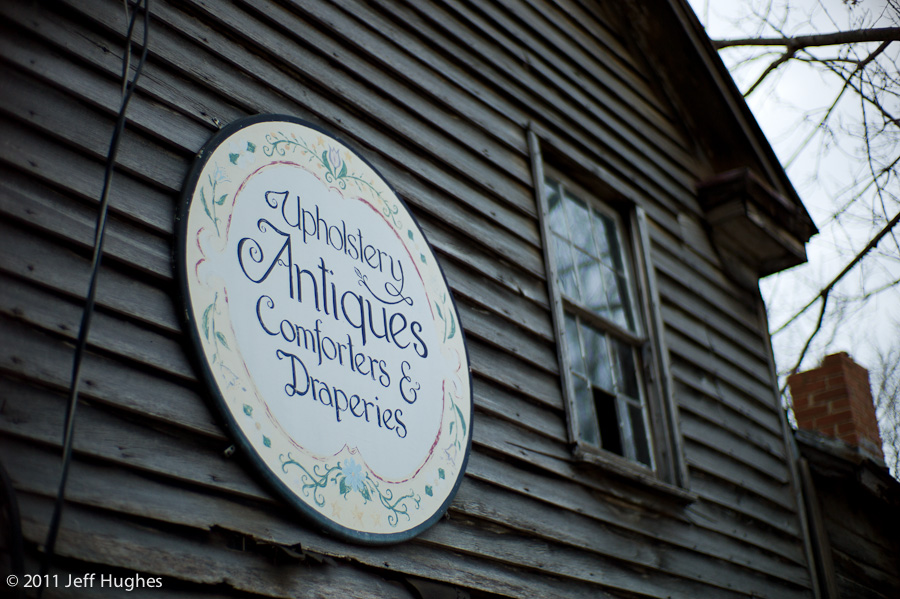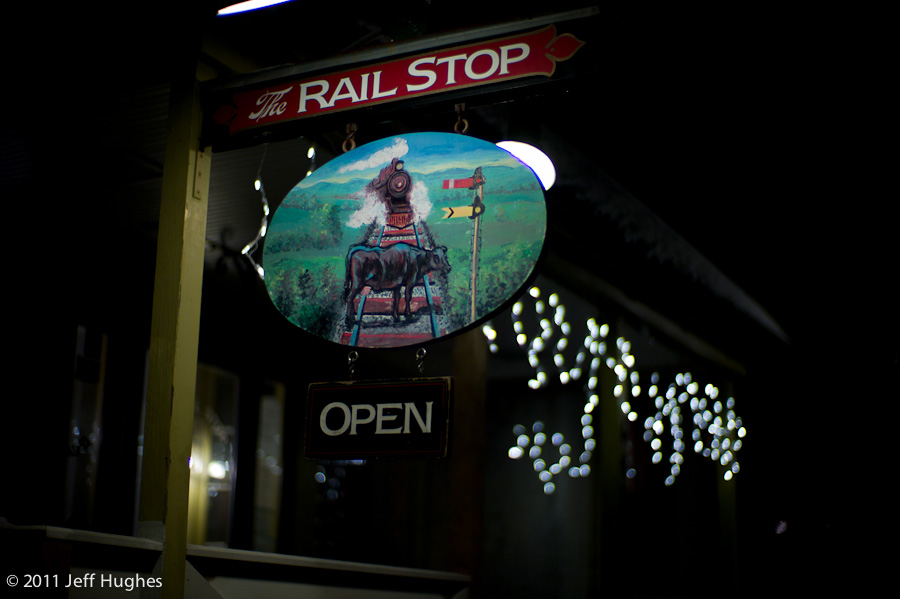
Own the Night
(Reflections on the Noctilux)
F1.
If you’re a photographer, those two simple characters represent a mystical place, one without peer. It speaks of lens speed so fast that light itself seems to bend in strange and magical ways. A prism through which the world is revealed via a new dimension.
The reality, for the few photographers fortunate enough to have experienced it, might be more plebian. To the optical designers chartered by their bosses with coming up with a piece of glass of such luminosity, an f1 lens is a nightmare of conflicting demands and compromises. It seems an impossibility, their very own Gordian Knot. And so what results, if they are able to build it at all – most never do - is a thing both wondrous and difficult. Like a beautiful, talented, and yet recalcitrant child, an f1 lens remains an enigmatic challenge to most photographers. It’s magic seems forever wedded to heartbreak.
Like most photographers who have fallen down that rabbit hole, I debated long and hard the merits of the Noctilux – Leica’s own fabled f1 lens – before sending along my credit card information. The stories surrounding that storied lens were legion, with as many shaken heads as there were smiling faces. I’d guess no lens in Leica’s long history has ever been sold by disappointed owners as often as has the Noctilux.
Mine arrived on a cold winter night. Dense and heavy, the thing seemed foreign to the Leica ethos – which is all about small and light. But gingerly removing the lens cap and peering at the large globe of glass was like looking at a mystery. The lens seemed otherworldly. The weight itself seemed to speak of things indescribable within it.
After a hurried supper, I tentatively mounted the pristine, new piece of glass on my M6 with its half-spent roll of Tri-X inside and climbed in my truck.
Two miles away, the bridge with the waterfall was shrouded in darkness. I knew that even the Noctilux couldn’t make that work. But the other side of the road, where the creek flowed under the fence, was lit by a couple of small sodium lights. There wasn’t much of it, but just enough light to reveal a hint, an intimation, of a beautiful scene.
The M6 felt heavy, strange in my hands. Raising it to my eyes, the single red triangle of the meter glared back at me. Click, click, click – trying to make it go away. By the time it did my shutter speed was flat on the floor. I couldn’t see the dial in the darkness, but I knew.
And so there was my first lesson with the Noctilux. Despite pulling out all the stops and injecting all the arcana that the then-current lens maker arts would allow, Walter Mandler’s magnificent creation bought only… one stop.
Like I said, heartbreak.
And there was more coming. In the succeeding weeks and months, the Noctilux proved to be a challenge. The sterling images I had heard about – and actually seen on the Internet – remained elusive. Most of my shots with it were disappointingly soft. Only occasionally would I get a glimpse of the magic that was supposed to be bottled up inside.
I slowly came to see why people would sell it, wondering what all the fuss was about.
A few years later, when the M8 and Summilux 50 ASPH came along, I pretty much stopped using it. The cropped sensor of the M8 meant that images lost much of their character, the unique signature that, along with its speed, was the raison d’etre of the Noctilux. And when the 50 Lux showed up on my doorstep I was instantly smitten. Probably the best 50mm lens ever built by anyone, it was a far better all-around lens than the Noctilux. Smaller and lighter. Better image quality at all apertures, save the one it was missing. And only a stop slower. What more could you need?
Another couple years and the M9 made its appearance. Along with its other merits, it brought back to me the full-frame view that I had long loved in my M6 and M7. It felt like going home again, only with all the benefits of a modern digital camera. Somewhere in the back of my mind was the quiet, murmuring thought that the Noct had gotten its canvas back.
Ironically, it was a series of shots at work one day with that still newish and sexy 50 Lux ASPH that prompted first a worry, and then a result. You can read about that little experience here, in Of Cameras and Lenses. The short answer is that I discovered that that Noctilux of mine was back-focusing significantly, something I never before had suspected. It was an intriguing discovery. I had always thought the softness I usually got with that lens was simply part of the design. Perhaps there was more to the story, after all.
I’ll stop here and note that Dr. Mandler designed his Noctilux back in 1976, before digital was even a gleam in anyone’s eye. Film emulsion has an inherent depth to it – typically on the order of 120-250 microns – and the image you capture actually lives within that depth. Among other things, that characteristic has the salutatory effect of attenuating some of the minor focus errors that all camera systems invariably introduce. Said differently, the level of calibration precision that lens makers must manage was less back in the days of film. Today’s digital world imposes far stricter requirements and all the lens makers have had to up their game.
All of which is to say that the necessarily less precise calibration and quality control procedures that Leica previously employed were probably a factor in my lens leaving the factory with the back-focus it did. I’m guessing that was the case with a lot of Noctiluxes. And I imagine that it contributed very much to the mixed success that many of us had with it.
Well, in December, after nearly a year of procrastinating, I finally got around to shipping my lens to Leica’s repair facility in New Jersey. I asked simply that it be recalibrated “for perfect focus at f1.” A few weeks later here comes the brown box with my lens. The good folks at Allendale didn’t even charge me for the work.
A few days later the annual DC Motorcycle Show arrived in town. Walking from my truck, I had the freshly-reworked Noct mounted on my M9 and my 35 Lux ASPH and a spare battery in my pocket. My thought was to shoot a couple quick frames of the ticket girls at the door with the Noctilux, and then switch over to my 35 for the rest of the show.
But a funny thing happened. Those first couple of shots were encouraging enough when chimping the rear screen that I left it on for a few more. And after a dozen frames I had pretty much decided to shoot the whole show with the Noct.
My reasoning was simple – venues like that are crowded with people, they have poor light, and the backgrounds are usually pretty crappy. Using the Noctilux wide open was a way to gain even more shutter speed and subject isolation than even my vaunted 35 Lux could achieve.
More importantly, it was the first time, in all the years I’ve owned it, that I ever used the Noct for more than a few frames at a time. The first time that I didn’t think of it as a specialty lens, intended for a very specific and limited effect. It was the first time I used it for an entire “shoot.”
Examining the images later on my computer, my first thought was that the Noct shots didn’t have the ‘pop’ that I expect from my 50 and 75 ASPH lenses (and to a lesser degree, my 35 ASPH). But the good news was that focusing was spot-on. Even shooting quickly – most of my subjects were of people – and wide open, my focus hit rate was very high.
And despite not having the contrast and resolution that would have been wrought by my more modern lenses, the more I looked at those images, the more I liked them. Notwithstanding the high levels of chromatic aberration and coma that join the party at f1, I found the slightly muted, slightly pastel renditions to have an enchantment all their own. There, hidden in the tapestry, was the Leica glow of legend.
2011 DC Motorcycle Show (all images taken inside the bike show were with the Noctilux, at f1; subsequent shots taken outside were with the 35 Lux ASPH).
And so begins the journey. Over the last few weeks I’ve used the Noct almost exclusively. Afternoon shots of old town Warrenton. Snow scenes of the tiny church and cemetery nearby that I love. Night shots of The Plains. A visit to Arlington Cemetery and the Iwo Jima Memorial. What I can say after three weeks is that I love this lens. I love the vignetting that darkens the corners at f1. I love its unique signature. I love its slightly dreamy, slightly breathless way of rendering what it sees.
And so what are the details, the photographer-geek-stuff, beneath this new-found love affair? The thumbnail would go something like this:
There’s no question that the size, weight, and long focus throw of the Noct make it a slower handling package when mounted to an M-body. But it’s not that much worse. Surely you can, in a pinch, use the Noctilux as an all-around, all-aperture 50 prime.
Not that you’d want to. Nobody buys a Noctilux so they can shoot it at f8. You buy it for that magical aperture that no other lens provides. You buy it for the vignetting and the falloff in contrast and detail in the corners. You buy it because of the special bokeh. You buy it because of the unique fingerprint, the texture and the micro-contrast that are written into its images. You buy it because of its razor-thin depth of field – so fragile and ephemeral that it seems if you so much as squint, the image will disappear. You buy it because of its ability to literally see in the dark – to extract the last, spare photons of light that might be there. You buy it knowing that your compositions, the subjects within your images, must harken towards the center of the frame because that’s where all those other things will pull a viewer’s eye.
In the end you buy it because of the ethereal quality that f1 wraps an image in. There’s nothing else quite like it.
And because of that, yes, you’ll want – you’ll need - a 6-stop neutral density filter. So you can continue to wield that magic in the light of day.
I’ve long carried a Leica nearly everywhere I go. First my M6. Then my M7. Then my M8. And now my M9. And although I’ll frequently carry a bag with a couple of spare lenses with me on the weekends, the reality is that I rarely use them. I tend to choose a given lens, stick it on my camera, wrap my head around that focal length and that lens and how it interprets the world, and then leave it on there for many weeks and months.
Now it’s the Noctilux’ turn.




© 2011 Jeff Hughes